What is TRIZ?
TRIZ (pronounced TREEZ) is the Russian acronym for the Theory
of Inventive Problem Solving (TIPS). It is an algorithmic approach to solving technical
and technological problems which are "inventive" (problem in which the solution
causes another problem to appear, such as increasing the strength of a metal
plate causing its weight to get heavier).
History
TRIZ began in 1946, when the Russian engineer and scientist
Genrich Altshuller served in the Soviet Navy as a patent expert and studied
thousands of patents and noticed certain patterns. From these patterns he
discovered that the evolution of a technical system is not a random process,
but is governed by certain objective laws. These laws can be used to consciously
develop a system along its path of technical evolution - by determining and
implementing innovations.
In the 1960s and 1970s, he categorized the solutions into
five levels:
-
Level one. Routine design problems solved
by methods well known within the specialty. No invention needed. About 32%
of the solutions fell into this level.
-
Level two. Minor improvements to an existing
system, by methods known within the industry. Usually with some compromise.
About 45% of the solutions fell into this level.
-
Level three. Fundamental improvement to an
existing system, by methods known outside the industry. Contradictions resolved.
About 18% of the solutions fell into this category.
-
Level four. A new generation that uses a new
principle to perform the primary functions of the system. Solution found
more in science than in technology. About 4% of the solutions fell into
this category.
-
Level five. A rare scientific discovery or
pioneering invention of essentially a new system. About 1% of the solutions
fell into this category.
With each succeeding level, the source of the solution required
broader knowledge and more solutions to consider before an ideal one could
be found.
Steps in the Triz process
-
Identify the problem. Identify the engineering system
being studied, its operating environment, resource requirements, primary
useful function, harmful effects, and ideal result.
-
Formulate the problem. Restate the problem in terms
of physical contradictions. Identify problems that could occur. Could improving
one technical characteristic to solve a problem cause other technical characteristics
to worsen, resulting in secondary problems arising? Are there technical
conflicts that might force a trade-off?
-
Search for previously well-solved problem. Altshuller
extracted from over 1,500,000 world-wide patents 39 standard technical characteristics
that cause conflict. These are called the 39 Engineering Parameters
(1. Weight of moving object, 2. Weight of nonmoving object, 3. Length of
moving object, 4. Length of nonmoving object, 5. Area of moving object,
6. Area of nonmoving object, 7. Volume of moving object, 8. Volume of nonmoving
object, 9. Speed, 10. Force, 11. Tension, pressure, 12. Shape, 13. Stability
of object, 14. Strength, 15. Durability of moving object, 16. Durability
of nonmoving object, 17. Temperature, 18. Brightness, 19. Energy spent by
moving object, 20. Energy spent by nonmoving object, 21. Power, 22. Waste
of energy, 23. Waste of substance, 24. Loss of information, 25. Waste of
time, 26. Amount of substance, 27. Reliability, 28. Accuracy of measurement,
29. Accuracy of manufacturing, 30. Harmful factors acting on object, 31.
Harmful side effects, 32. Manufacturability, 33. Convenience of use, 34.
Repairability, 35. Adaptability, 36. Complexity of device, 37. Complexity
of control, 38. Level of automation, 39. Productivity.) Find the contradicting
engineering principles. First find the principle that needs to be changed.
Then find the principle that is an undesirable secondary effect. State the
standard technical conflict.
-
Look for analogous solutions and adapt to the solution.
This is particularly useful for problems of Level two as mentioned
above and can be done by using an impressive list of 40 inventive principles
that Altshuller also extracted from the patents:
-
Segmentation
-
Divide an object into independent parts.
-
Make an object sectional.
-
Increase the degree of an object's segmentation.
-
Extraction
-
Local Quality
-
Transition from a homogeneous structure of an object
or outside environment/action to a heterogeneous structure.
-
Have different parts of the object carry out different
functions.
-
Place each part of the object under conditions most
favorable for its operation.
-
Asymmetry
-
Replace a symmetrical form with an asymmetrical form.
-
If an object is already asymmetrical, increase the degree
of asymmetry.
-
Combining
-
Universality. Have the object perform multiple
functions, thereby eliminating the need for some other object(s).
-
Nesting
-
Contain the object inside another which, in turn, is
placed inside a third object.
-
Pass an object through a cavity of another object.
-
Counterweight
-
Compensate for the object's weight by joining with another
object that has a lifting force.
-
Compensate for the weight of an object by interaction
with an environment providing aerodynamic or hydrodynamic forces.
-
Prior counter-action
-
Perform a counter-action in advance.
-
If the object is (or will be) under tension, provide
anti-tension in advance.
-
Prior action
-
Cushion in advance. Compensate for the relatively
low reliability of an object by countermeasures taken in advance.
-
Equipotentiality. Change the working conditions
so that an object need not be raised or lowered.
-
Inversion
-
Instead of an action dictated by the specifications
of the problem, implement an opposite action.
-
Make a moving part of the object or the outside environment
immovable and the non-moving part movable.
-
Turn the object upside-down.
-
Spheroidality
-
Replace linear parts or flat surfaces with curved ones;
replace cubical shapes with spherical shapes.
-
Use rollers, balls spirals.
-
Replace a linear motion with rotating movement; utilize
a centrifugal force.
-
Dynamicity
-
Make an object or its environment automatically adjust
for optimal performance at each stage of operation.
-
Divide an object into elements which can change position
relative to each other.
-
If an object is immovable, make it movable or interchangeable.
-
Partial or overdone action. If it is difficult
to obtain 100% of a desired effect, achieve somewhat more or less to greatly
simplify the problem.
-
Moving to a new dimension
-
Remove problems with moving an object in a line by two-dimensional
movement (i.e. along a plane).
-
Use a multi-layered assembly of objects instead of a
single layer.
-
Incline the object or turn it on its side.
-
Mechanical vibration
-
Set an object into oscillation.
-
If oscillation exists, increase its frequency, even
as far as ultrasonic.
-
Use the resonant frequency.
-
Instead of mechanical vibrations, use piezovibrators.
-
Use ultrasonic vibrations in conjunction with an electromagnetic
field.
-
Periodic action
-
Replace a continuous action with a periodic (pulsed)
one.
-
If an action is already periodic, change its frequency.
-
Use pulsed between impulses to provide additional action.
-
Continuity of a useful action
-
Carry out an action continuously (i.e. without pauses),
where all parts of an object operate at full capacity.
-
Remove idle and intermediate motions.
-
Rushing through. Perform harmful or hazardous operations
at very high speed.
-
Convert harm into benefit
-
Utilize harmful factors or environmental effects to
obtain a positive effect.
-
Remove a harmful factor by combining it with another
harmful factor.
-
Increase the amount of harmful action until it ceases
to be harmful.
-
Feedback
-
Mediator
-
Self-service
-
Copying
-
Use a simple and inexpensive copy instead of an object
which is complex, expensive, fragile or inconvenient to operate.
-
Replace an object by its optical copy or image. A scale
can be used to reduce or enlarge the image.
-
If visible optical copies are used, replace them with
infrared or ultraviolet copies.
-
Inexpensive, short-lived object for expensive, durable
one. Replace an expensive object by a collection of inexpensive ones,
forgoing properties (e.g. longevity.
-
Replacement of a mechanical system
-
Replace a mechanical system by an optical, acoustical
or olfactory (odor) system.
-
Use an electrical, magnetic or electromagnetic field
for interaction with the object.
-
Replace fields
-
Stationary fields with moving fields.
-
Fixed fields with those which change in time.
-
Random fields with structured fields.
-
Use a field in conjunction with ferromagnetic particles.
-
Pneumatic or hydraulic construction. Replace solid
parts of an object by gas or liquid. These parts can use air or water
for inflation, or use air or hydrostatic cushions.
-
Flexible membranes or thin film
-
Use of porous material
-
Make an object porous or add porous elements (inserts,
covers, etc.).
-
If an object is already porous, fill the pores in advance
with some substance.
-
Changing the color
-
Change the color of an object or its surroundings.
-
Change the degree of translucency of an object or processes
which are difficult to see.
-
Use colored additives to observe objects or processes
which are difficult to see.
-
If such additives are already used, employ luminescent
traces or tracer elements.
-
Homogeneity. Make those objects which interact
with a primary object out of the same material or material that is close
to it in behavior.
-
Rejecting and regenerating parts
-
After it has completed its function or become useless,
reject or modify (e.g. discard, dissolve, evaporate) an element of an
object.
-
Immediately restore any part of an object which is exhausted
or depleted.
-
Transformation of the physical and chemical states
of an object. Change an object's aggregate state, density distribution,
degree of flexibility, temperature.
-
Phase transformation. Implement an effect developed
during the phase transition of a substance. For instance, during the change
of volume, liberation or absorption of heat.
-
Thermal expansion
-
Use strong oxidizers
-
Replace normal air with enriched air.
-
Replace enriched air with oxygen.
-
Treat an object in air or in oxygen with ionizing radiation.
-
Use ionized oxygen.
-
Inert environment
-
Composite materials. Replace a homogeneous material
with a composite one.
The 40 Inventive Principles have been updated, reviewed, and
extended to application to non-technical fields (management, social) beyond
the original applications in engineering and technology.
|
Forum about TRIZ.
|
🔥
|
Tips on Teaching TRIZ
As a teacher I'm interested in TRIZ for educational purposes. I intend to introduce it to my class. Please share your experiences or best practices. Thank you....
 5  6 comments |
|
|
|
Courses about TRIZ.
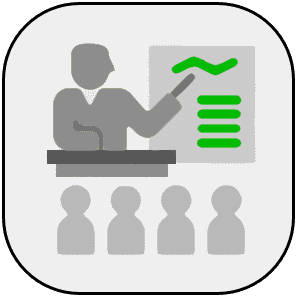
Beginners Course
|
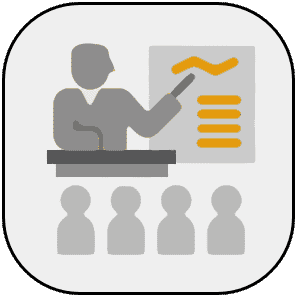
Advanced Course
|
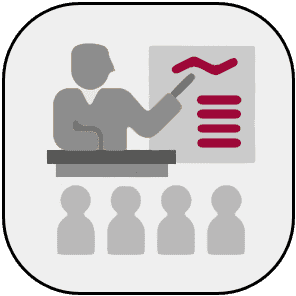
Course for Experts
|
|
|
|
The best, top-rated topics about TRIZ. Here you will find the most valuable ideas and practical suggestions.
|
|
|
Advanced insights about TRIZ. Here you will find professional advices by experts.
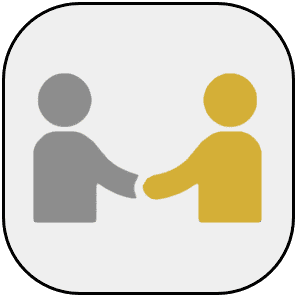
Consultancy Tips
|
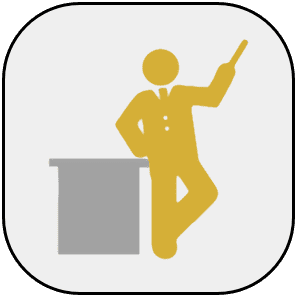
Teaching Tips
|
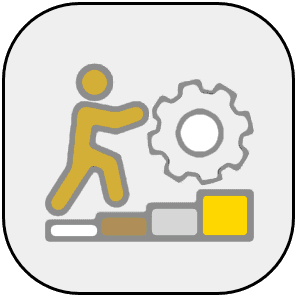
Practical Implementation Tips
|
|
|
|
|
|
Various sources of information regarding TRIZ. Here you will find powerpoints, videos, news, etc. to use in your own lectures and workshops.
|
|
|
Useful tools regarding TRIZ.

News
|

Videos
|

Presentations
|
| |

Books
|

Academic
|

More
|
|
|
|
Compare with: Lateral Thinking
| Brainstorming |
Technological Forecasting
| Synectics |
Gestalt Theory |
Thinker's Keys | Mind Mapping |
Six Thinking Hats
| Metaplan |
Bounded Rationality
| Causal Ambiguity
| Stage-Gate |
Scenario Planning |
Game Theory |
Root Cause Analysis |
Dialectical Inquiry |
Analogical Strategic
Reasoning |
Theory of Constraints
| Force Field Analysis
| Catalytic Mechanisms
| Johari Window
| Delphi Method | Chief Technology Officer
|
|
|

